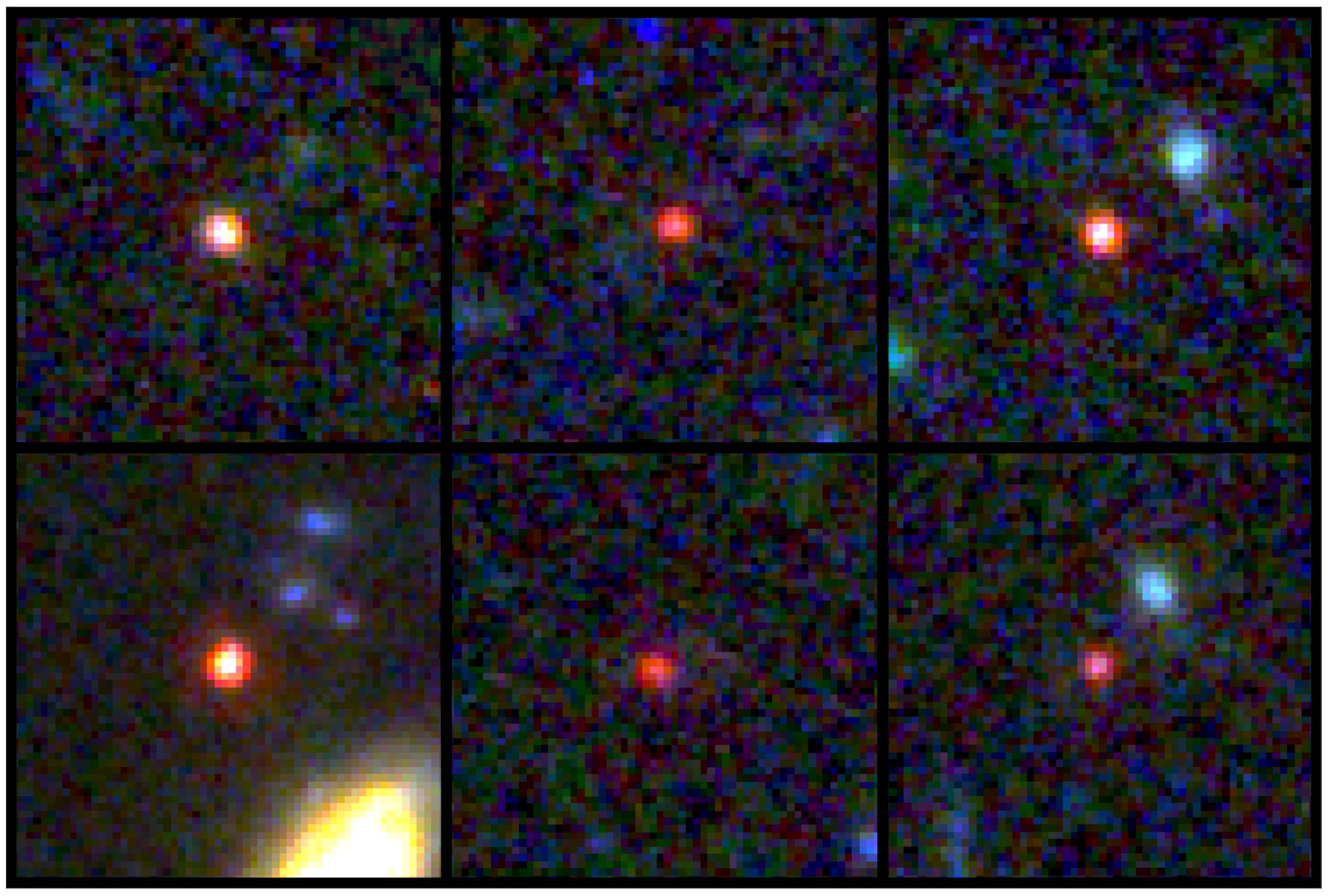Nasa’s James Webb Space Telescope finds set of huge galaxies that ‘shouldn’t exist’
Shocking galaxies are as mature as our own – but exist at the very beginnings of the universe
Your support helps us to tell the story
From reproductive rights to climate change to Big Tech, The Independent is on the ground when the story is developing. Whether it's investigating the financials of Elon Musk's pro-Trump PAC or producing our latest documentary, 'The A Word', which shines a light on the American women fighting for reproductive rights, we know how important it is to parse out the facts from the messaging.
At such a critical moment in US history, we need reporters on the ground. Your donation allows us to keep sending journalists to speak to both sides of the story.
The Independent is trusted by Americans across the entire political spectrum. And unlike many other quality news outlets, we choose not to lock Americans out of our reporting and analysis with paywalls. We believe quality journalism should be available to everyone, paid for by those who can afford it.
Your support makes all the difference.Nasa’s James Webb Space Telescope has found a set of massive galaxies that should not exist.
The equipment was used to observe a set of massive galaxies that formed around 500-700 million years after the Big Bang, when the universe was only 3 per cent of its current age. Those galaxies have stellar masses as high as ten billion times that of our Sun, and one that could be as massive as 100 billion of our Sun.
In all, scientists found six galaxies, which together threaten to change what scientists know about the beginnings of galaxies in our universe. Researchers say they refer to the objects as “universe breakers” and that they are in tension with 99 per cent of existing models of the universe.

Such galaxies should not be expected to be so big so soon after the beginnings of the universe, the researchers say. The mass of the stars examined in the new research are as much as 100 times greater than researchers had previously thought.
“These objects are way more massive than anyone expected,” said Joel Leja, assistant professor of astronomy and astrophysics at Penn State, who modeled light from the galaxies, in a statement.
“We expected only to find tiny, young, baby galaxies at this point in time, but we’ve discovered galaxies as mature as our own in what was previously understood to be the dawn of the universe.”
If they can be confirmed, they suggest that our history of the early cosmos may be wrong, and that galaxies grew far more quickly than we realised. That would require changing either our models of the universe or our understanding of how galaxies began.
“We looked into the very early universe for the first time and had no idea what we were going to find,” Leja said. “It turns out we found something so unexpected it actually creates problems for science. It calls the whole picture of early galaxy formation into question.”
But scientists caution that the distance and age of the galaxies mean that they cannot be absolutely sure what they are. Some might turn out to be supermassive black holes, researchers say – but with six candidates, a number of them are likely to really be galaxies, as suspected.
“If even one of these galaxies is real, it will push against the limits of our understanding of cosmology,” said Erica Nelson, co-author of the new research and assistant professor of astrophysics at the University of Colorado Boulder.
And even other objects would still be shocking, researchers say. “Another possibility is that these things are a different kind of weird object, such as faint quasars, which would be just as interesting,” said Professor Nelson.
The findings could be confirmed by taking spectrum images of the galaxies, which would better confirm how far away they are and what they are made up of. That in turn would let scientist understand what they might look like and how big they are.
The new study, ‘A population of red candidate massive galaxies ~600 Myr after the Big Bang’, is published in Nature today.

Join our commenting forum
Join thought-provoking conversations, follow other Independent readers and see their replies
Comments